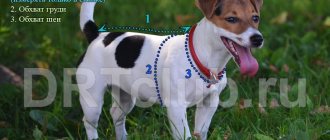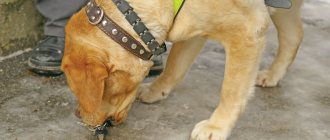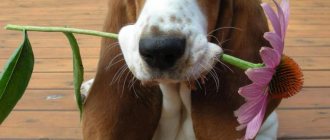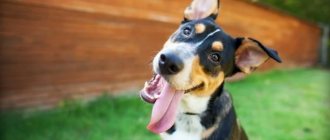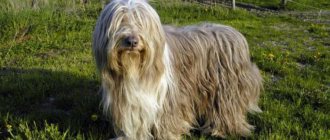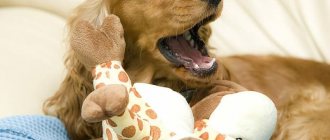The first manned space flight took place on April 12, 1961. They still teach about this in school. Less well known are other heroes - dogs who fearlessly paved the way for the exploration of outer space. Sometimes for this they sacrificed their health, and sometimes their lives.
Most space tests involving dogs were carried out in the 50-60s of the last century. The intensity of such experiments at that time was enormous, since they were talking about the primacy of man in space. Most of the cosmonaut dogs were launched in aircraft of the USSR and China.
Most suitable animals
Before humanity could cross the boundary between the upper atmosphere and space, it was decided that animals would be the pioneers. Two candidate species were chosen: dogs and monkeys.
During the selection period, scientists found that monkeys are not so successful in training and learning, their capricious nature often manifests itself, they often behave restlessly and are unpredictable in their actions. The dogs, on the contrary, willingly interacted with the researchers and were less susceptible to stress.
Scientists emphasized that the dogs should be ordinary mongrels who were picked up for research simply on the street. This was explained by the fact that they had already undergone natural selection, and therefore were endowed with excellent physical characteristics.
Thoroughbred representatives were significantly inferior in the following characteristics:
- excellent immunity and regenerative reserve of the body;
- ingenuity and learning ability;
- unpretentiousness in nutrition and excellent digestion;
- devotion and desire to please the person.
Special requirements were applied to physical parameters:
- height no higher than 35 cm and weight up to 6 kg - this was required based on the size of the cabins in the rockets;
- short hair – necessary for tightly attaching sensors to the body;
- females - it was easier for them to develop a urine drainage system in space;
- age - from 2 to 6 years;
- white coat color - for the most advantageous appearance on television.
Animals were launched into space in pairs to ensure average results.
Laika
And the first “declassified” dog was the mongrel Laika. After 1957, when the first artificial Earth satellite was launched into orbit, Khrushchev demanded from Korolev the next, no less spectacular launch. The chief designer decided to send a dog on the second satellite. It was clear that this was a kamikaze: at that time they did not yet know how to return a ship from a space flight. Of the dozen trained, the “testers” first selected three - Albina, Laika and Mukha.
“Albina has already flown twice and has served science well,” Vladimir Ivanovich Yazdovsky told me. “Plus, she had funny puppies.” We decided to feel sorry for her.
Two-year-old Laika was chosen as the cosmonaut. She was nice, calm, affectionate. It was a pity for her...
Laika
They prepared Laika for the flight in a very touching way. It was late autumn at Baikonur, and it was quite cool in the cabin. Doctors ran a hose with warm air from a ground-based air conditioner to keep the dog warm.
On November 3, 1957, Laika went into orbit. The Telegraph Agency of the Soviet Union officially reported:
“In accordance with the program of the International Geophysical Year for scientific research of the atmosphere, as well as for the study of physical processes and living conditions in outer space... the second artificial Earth satellite was launched.”
Next, it listed what research equipment was on board the satellite, and casually it was said that, in addition to everything, the satellite carried “a sealed container with an experimental animal (dog) ....” The dog's name was made public only a day later.
No one knew then that the dog, whose portraits appeared in all the newspapers, had a one-way ticket. Moreover, when her portrait was published, she was already dead. Everyone involved in the experiment knew that Laika’s life in space would be three to four hours. A week-long flight was out of the question. There was a serious technical error in the design of the cabin. It was too late to redo it. For the experimenters, it was important how the dog would transfer the launch into orbit and the few orbits that it would live and which would provide valuable telemetry.
Laika
Laika lived in zero gravity for several hours, and then, as official reports say, the “cosmonaut” was put to sleep. But it was a nice lie. The dog overheated during the flight and presumably died from heat and suffocation on the fourth orbit. Meanwhile, newspapers and radio reported several times a day on the well-being of... the already dead dog.
For several more months, the second Soviet satellite with the deceased Laika wound up its orbits, and only in April 1958 did it enter the dense layers of the atmosphere and burnt up.
Cigarettes "Laika"
When the English Humane Society protested the martyrdom of dogs, Soviet industry responded by urgently releasing Laika cigarettes with the image of the legendary dog.
Geophysical rockets
Research on launching dogs into space on this type of aircraft was carried out in three stages:
- Height up to 100 km. The rocket's speed was 4.2 thousand km/h, while the acceleration was enormous and the overload reached 5.5 units. The animals were tied with special straps in trays. After reaching the maximum height, the head compartment with the dogs was lowered to the ground by parachute. Often experiments ended in minor injuries to animals, and several times they resulted in death.
- Height up to 110 km. The animals ejected in spacesuits using parachutes and sometimes one of the two companions returned, and sometimes everything went well. The duration of such flights did not exceed 20 minutes.
- Altitude up to 450 km. At this stage, the animals landed without ejection, in the head compartment of the rocket. Sometimes animals of other species (rabbits, rats, mice) joined the dogs. On one flight, the animals were under general anesthesia.
About dogs in space
When asked what the names of the dogs that flew into space were, most of our contemporaries will remember Belka and Strelka, who on August 19, 1960 were sent on an orbital flight around the Earth and returned 25 hours later (i.e. on August 20, 1960). alive and famous. But few people will remember Laika, the dog, whose mission, unfortunately, was not as successful as that of Strelka and Belka. Laika was launched into space in November 1957 (that is, it can be partly stated that the first flight of a dog into space was not in 1960, but 3 years earlier, although it was unsuccessful), but the ventilation system in the spacecraft failed, as a result causing the animal to die from overheating.
But even if such a failure had not occurred, Laika had no chance of survival: under no circumstances could the Sputnik-2 ship have delivered the animal to Earth safely for technical reasons.
Also, the story of Chanterelle and Chaika, who died in July 1960, during the launch of Sputnik-5-1, has sunk into oblivion. These dogs, like Laika, were Strelkin and Belkin’s predecessors, but fortune, alas, did not smile on them. And how many doggies died during the scientific research stage! Belka and Strelka were the first dogs whose mission to fly into space ended successfully.
The first, but not the only ones. So, already in March 1961 there was a flight of the dog Chernushka (she returned safely), and in the same month a ship with the dog Zvezdochka was launched (and she returned to Earth alive and well). And in February 1966, the first male dogs to be in space, whose nicknames were Ugolek and Veterok, received their moment of fame. Their flight lasted a record 22-odd days (!), but both boys survived.
Test progress
Flight data was strictly classified. The animals were given pseudonyms, so for a long time there was confusion in information about the participants.
Dogs were paired up based on mental compatibility and comfort of interaction, so it was impossible to replace partners. One day, a flight was in jeopardy because one dog, who was supposed to fly the next day, ran away during an evening walk. However, he returned the next morning and began to lick people's hands with a guilty look. The flight took place.
The scientists treated the animals very warmly: despite the fact that the food was balanced and strictly coordinated, everyone tried to quietly bring something tasty to their pet from home. Even Korolev, who supervised the progress of all tests, training and experiments and advocated for the implementation of prohibitions, could not resist the temptation and fed the pets. He perceived the injuries and loss of each dog very painfully, not only from the point of view of failures in the promotion of astronautics, but also as a personal guilt towards his devoted animals. Many pets, after completing their mission, were taken home by employees of the testing center.
Behavior of Belka and Strelka in flight
Already at the start, both dogs' pulse and breathing rate increased significantly, but after some time the dogs calmed down and even began to behave somewhat apathetically. Observers noted the following features of the influence of flight on the behavior of dogs:
- The dogs did not suffer from a lack of appetite, confidently accepting food from automated devices.
- In conditions of weightlessness, the circulatory system of both dogs worked without deviations.
- The body temperature of Belka and Strelka remained unchanged throughout the flight.
- After completing the 4th orbit around the Earth, Belka, who was more active in behavior, began to break free from the belts that constrained her movements, she vomited, however, on Earth her health was considered satisfactory.
Contribution of Belka and Strelka to the development of astronautics
This is interesting!
During the flight, at the moment when the US satellite flew past the ship with Belka and Strelka, both dogs barked, which was very consistent with the spirit of confrontation in space between the two superpowers.
Belka and Strelka's reaction to the American satellite "Echo"
At 13:32 on August 20, 1960, the organizers of the flight on Earth gave the order to begin the descent of the spacecraft with dogs on board, which was completed successfully. Its landing took place at a distance of 10 km from the intended point, but the specialists who arrived at the landing site of the capsule found absolutely no deviations in the behavior and well-being of Belka and Strelka. The flight could be considered successfully completed.
Belka and Strelka on board the ship
This is interesting!
After grueling training in preparation, the dogs often felt much worse than after the actual flight.
How did the dogs cope with the flight?
Pioneer
The first dog to go into orbit was two-year-old Laika. The employees of the testing center gave her this nickname because she barked often and loudly. Her real nickname was Kudryavka. Before flying into space, the animal was surgically implanted with breathing sensors and a pulse sensor. She was gradually accustomed to a place in the cabin so that she felt familiar there. To do this, she spent a little time every day in the compartment where she would be located after takeoff.
Before the start, Laika was dressed in a special jumpsuit, which was attached with wires to the equipment. The length of the wires was enough for her to change her body position: freely stand up, sit down and lie down.
On November 3, 1957, Laika was launched into space. It was initially planned that its flight would continue for a week, but the animal died after completing 4 orbits around the Earth in 6-7 hours. The cause of death was overheating due to a design error. After this, the spacecraft continued to orbit the planet until April 1958, after which it burned up in the upper atmosphere.
Information about Laika’s death was kept silent, news about her condition was broadcast for another week, and then the media announced that the dog had been euthanized. This news caused a wide resonance and was received sadly by the Western media.
LiveInternetLiveInternet
Dogs flying into space
On Cosmonautics Day, let us remember those who paved the way for humanity into space. His faithful friends, ready to help, sometimes even their whole lives. After all, the first living creatures to fly on a rocket were dogs. Everyone knows the legendary Laika, a couple of cosmonaut dogs Belka and Strelka , but they were not the first and not the last of the animals to conquer the Earth's orbit. Read more about four-legged heroes.
A series
were conducted on the possibility of flying living beings on space rockets. Studies have been conducted on the effects of altered gravity and vibration overload on animals. For flights, mongrel and stray dogs were used. Compared to purebred dogs, mongrels are characterized by good health, ingenuity, and unpretentiousness. The first part of the experiments was carried out on geophysical rockets from the Kapustin Yarv test site in the Astrakhan region. The rockets reached an altitude of 100-400 km and their separating warheads with passengers descended back by parachute. …………. Dezik and Gypsy became living beings who, for the first time in history, flew on a rocket into the upper layers of the atmosphere to the conditional border with space. The launch of the R-1B rocket with dogs on board took place on July 22, 1951 . The flight lasted about 20 minutes. The container with the dogs landed 20 km from the launch site. Dezik and Gypsy safely endured the overload and weightlessness.
Later, Gypsy was taken to his home by the chairman of the State Commission for the Organization of Research on Geophysical Rocket, Academician Blagonravov. Then other dogs also flew, unfortunately, not all flights ended safely. Afterwards, an emergency rescue system for astronauts was developed.
Unlucky, ZIB and Rozhka's escape The last launch, completing the first stage of flights on geophysical rockets, was scheduled for September 3, 1951 . Neputevy and Rozhok were assigned as passengers of the R-1B rocket . That's the interesting story behind this flight.
Immediately before the start, we noticed the absence of Rozhok . The cage was locked, the Unlucky one was in place, and the Horn had disappeared. There was no time to look for a new dog. The researchers came up with the idea of catching a suitable dog near the dining room. We found a dog that was suitable in weight, calm, and light in color. They washed it, attached the sensors - the newly minted candidate behaved calmly. They came up with the name ZIB - “spare for the missing Bobik” (according to other recollections, the nickname was ZIP - “spare test dog”). In the confusion, it was not clear that ZIB was, in essence, a puppy. The good-for-nothing and his new partner had a safe flight. Unlucky and ZIB after landing.
These dogs were the last in the first stage of testing on geophysical rockets. After landing, Korolev noticed the substitution, and he was told what happened. Sergei Pavlovich assured that soon everyone would be able to fly on Soviet rockets. And Rozhok, by the way, was later found. ……………… Laika became the first animal launched into Earth orbit. It was launched into space on November 3, 1957 on the Soviet ship Sputnik-2 from the new Tyuratam cosmodrome ( Baikonur ).
The return of Laika to Earth was still technically impossible; the dog died.
The press in the USSR did not immediately realize the significance of the event . TASS officially reported the launch of Sputnik 2 on the same day, but the article first listed the research equipment and only at the end it said that there was a dog on board .
This became a sensation in the Western press . The articles expressed admiration for the dog and at the same time worried. The New York Times published an article calling Laika “the loneliest and most unhappy dog in the world.” Paris In memory of the animals who gave their lives in the name of science, a granite column was erected in front of the Paris Society for the Protection of Dogs 1958 Its top is crowned by a satellite, from which the pretty stone face of Laika, the first space traveler, peeks out. The monument in Moscow will be erected later, in 2008 (see below).
In general, Laika’s flight in Sputnik 2 caused a controversial reaction in the West . He simply scared many... Politicians and the media went overboard, whipping up fear about Soviet space successes, but let’s not forget that the destruction of capitalism was the officially declared goal of the USSR, and Secretary General Khrushchev promised to show America “Kuzka’s mother.” The term “peaceful coexistence of two systems” appeared only in the 70s of the twentieth century. ……… In the book of the correspondent of the newspaper “Rural Life” in the USA A. Laurinciukas “The Third Side of the Dollar” the following story is told. “The dog Laika was sent into space, knowing in advance that she would die. After this, the UN received a letter from a group of women from Mississippi. They demanded to condemn the inhumane treatment of dogs in the USSR and put forward a proposal: if for the development of science it is necessary to send living beings into space, in our city there are as many black children as possible for this purpose.” But this is most likely a lie.
Many employees who participated in the preparation of Laika had a psychologically difficult time with the death of the dog. Soviet physiologist Oleg Gazenko spoke about his psychological state: “when you understand that you can’t bring this Laika back, that she’s dying there... and that no one can bring her back... it’s a very difficult feeling.”
Laika cigarettes were released in the USSR
On April 11, 2008, a monument to Laika was erected in Moscow, on the territory of the Institute of Military Medicine, where the space experiment was being prepared .
The two-meter-tall monument represents a space rocket that turns into a palm, on which a four-legged explorer of extraterrestrial space proudly stands. A monument to Laika is also installed in Crete (Greece) in the Homo Sapiens Museum (right) and in Holland (left).
………….. Other monuments to astronaut dogs can be viewed here: Monuments to dogs - the symbol of the year 2021 part 1 ………… Many films, documentaries and more, have been made astronaut dogs into space Songs, music videos, and the animated film LAIKA are dedicated to Laika Marvel comics, Cosmo's dog is undoubtedly Laika . In the 2014 Guardians of the Galaxy, In this film, "Taneleir Tivan's collection of life forms includes a live dog wearing a spacesuit with the inscription "USSR" on it. The videos can be viewed here https://www.like-a.ru/?p=50413# ………….. But the research continued. Brave, Star and Malek .
The launch took place on June 15, 1960 on an R-2A rocket to an altitude of 206 km. Brave became the record holder for the most number of flights among dogs, she had five flights . Her effigy is now in the State Central Museum of Contemporary History of Russia. ……………. Belka and Strelka On August 19, 1960, the dogs Belka and Strelka became the first living creatures to complete a daily orbital flight and return safely . Some time after landing, Strelka gave birth to healthy offspring - six puppies.
Belka and Strelka planting container
.Strelka and spacesuit
……………
Belka and Strelka at the Museum of Cosmonautics
In the center is the head of a geophysical rocket, which in the 1950s used to fly animals to altitudes of up to 100 km. and returned back. …………. Soviet physiologist Oleg Gazenko with Belka and Strelka after the flight
And details about Strelka's puppies are below. ………….. Despite the demand of the USSR government for the urgent launch of a man into space, S.P. Korolev decided to carry it out only after two consecutive successful launches of ships with dogs .
The flight of the dog Chernushka and the dummy, nicknamed “Ivan Ivanovich” on March 9, 1961, was successful. And on March 25, 1961, Zvezdochka’s on the Vostok No. 2 .
The first cosmonaut gave her the nickname, and she had to test all the systems on herself one last time before the first human launch into space. Ivan Ivanovich also flew along with the dog . Also in flight, photographic reconnaissance equipment was tested over objects in Turkey and Africa. There were only 18 days left before Gagarin's flight into space!
Yuri Gagarin once admitted: “ I myself don’t understand who I am: the first man (in space) or the last dog .” And there is a great deal of truth in these words. From a technical point of view, the flights of dogs and the first cosmonaut were fundamentally not much different. The only difference is that the dogs didn’t even know what they were doing to them, but Yuri Alekseevich knew. ………….. On February 22, 1966 , in preparation for a long-term Veterok and Ugolyok flew on the biosatellite ship “Cosmos-110” . Its duration was 23 days.
Breeze and Coal returned extremely exhausted, but after some time, their condition returned to its original state. They subsequently gave birth to healthy offspring. Ordinary mongrels paved the way for people into space!
Belka , Strelka and others in photographs These are Strelka’s children - photo review in Murzilka
.
. ………. Photo 1st row: Strelka and her puppies - Baby, Damka, Dymka, Curly, on the right - cosmonaut Chernushka . 2nd row: Tishka the puppy Strelki and cosmonauts Zvezdochka and Belka .
Puppy Fluff from Strelka was presented to the family of US President John F. Kennedy.
However, foreign sources claim that this puppy was Pushinka , who brought four puppies. Kennedy nicknamed the puppies “ Pupniks ” (crossing the words pup (puppy) and sputnik).
…………. That's how it all began! …………….
Search and training of dogs
The dogs were searched on Moscow streets and sent to the Research Institute of Aviation Medicine (NIIIIAM). The criteria were very strict. They looked for mongrels as the most hardy from two to six years old, mainly females, since they had the most convenient act of urination for flight. Calm and healthy animals were selected. They should not weigh more than 6 kilograms and exceed 35 centimeters at the withers - such parameters were dictated by the size of the cabins. Preference was also given to light-colored dogs to make them easier to see on the screens, and to short-haired dogs to make it easier to position the sensors.
Dogs were selected in pairs based on their compatibility. Those who were suitable in appearance, temperament and health were taught to eat jelly-like food obtained using a mechanical device and defecate in a special bag, and also developed the habit of not being afraid of long stays in cramped and dark spaces. To do this, the animals were isolated in cells, the sizes of which were gradually reduced, and the time of solitude was increased from a couple of hours to several days. This was the most difficult test for both dogs and people. Those who endured it were trained to wear suits with seat belts that limited their mobility. In them, dogs could only sit, lie down and take one step forward or backward. Finally, the animals were trained on a shaker and a centrifuge.
Dogs that successfully passed all tests were surgically implanted with sensors that recorded body temperature, arterial pulse, ECG, and respiratory rate.


